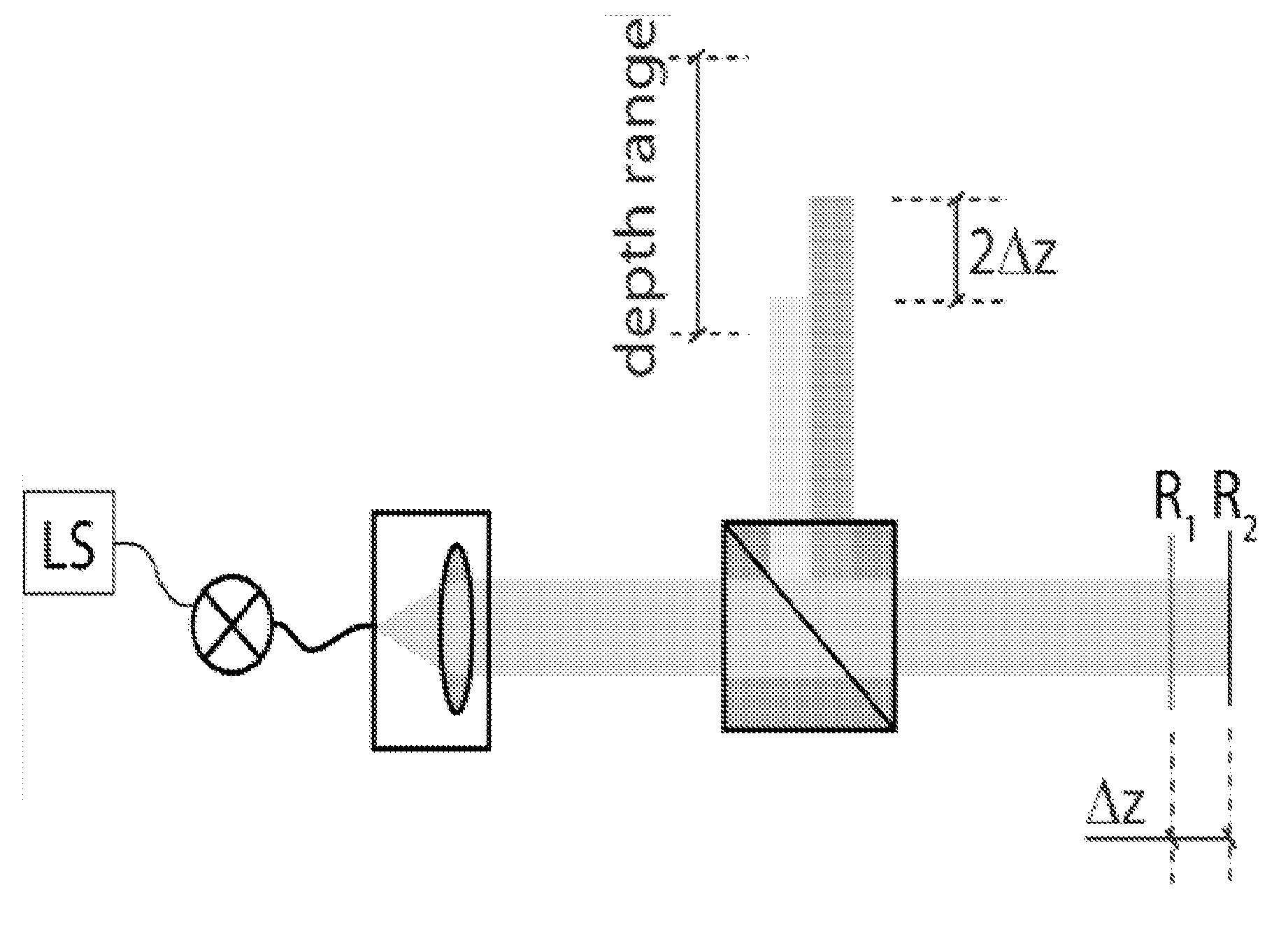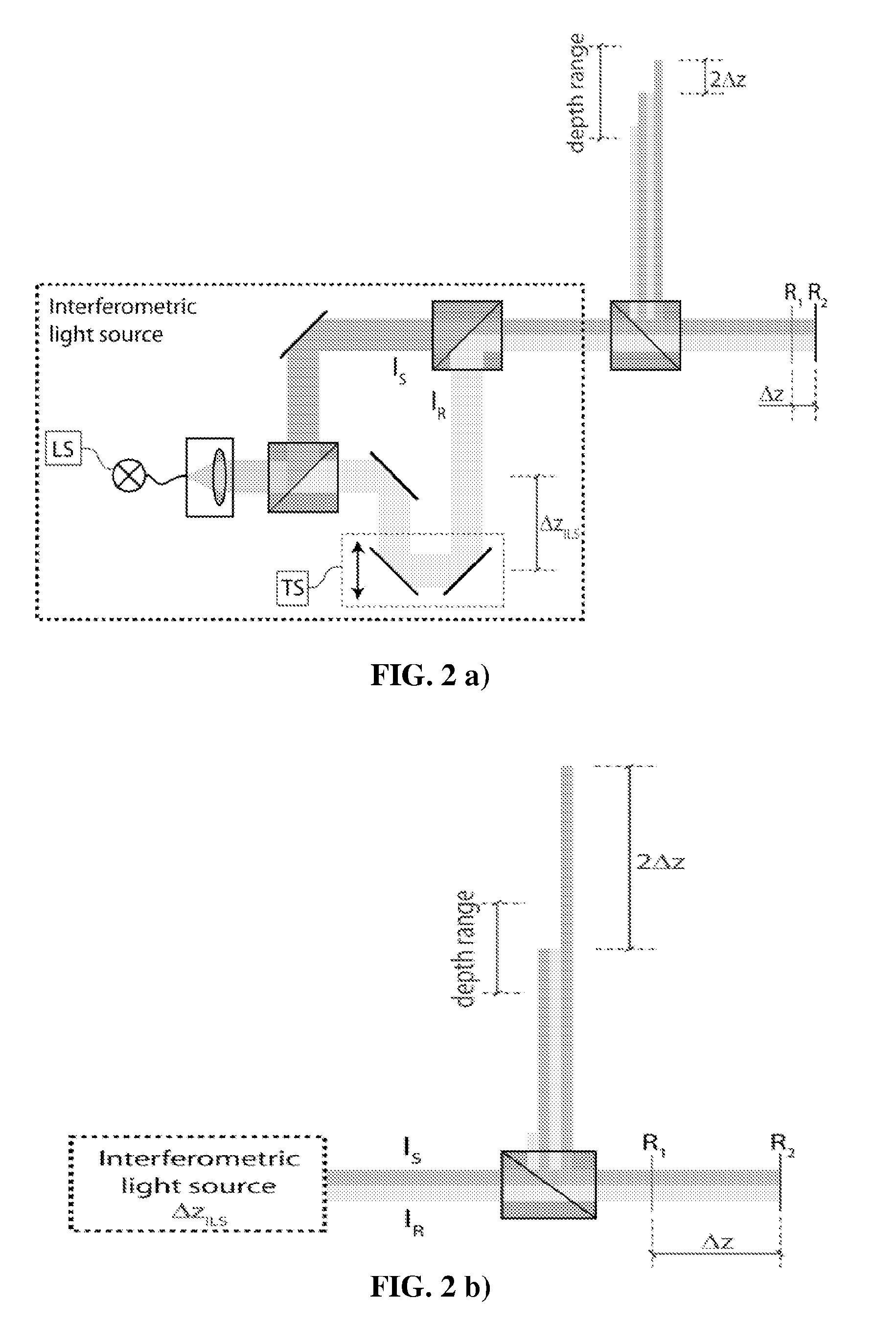Dual beam heterodyne fourier domain optical coherence tomography
a fourier domain, heterodyne technology, applied in the field of fourier domain optical coherence tomography, can solve the problems of maximum depth ranging restrictions, signal degradation, distortion of mirror structures, etc., and achieve the effect of keeping beam scanning flexibility and without sacrificing measurement depth rang
- Summary
- Abstract
- Description
- Claims
- Application Information
AI Technical Summary
Benefits of technology
Problems solved by technology
Method used
Image
Examples
Embodiment Construction
Short Description of the Figures
[0009]FIG. 1. Concept of a common path configuration. A prominent reflection (R1) close to the sample structure (R2) is used as reference signal. Δz is the optical path difference between the sample interfaces R1 and R2.
[0010]FIG. 2. (a) Dual beam principle. The output of an interferometer with a relative delay of 2ΔzIILS between the two light beam intensities IR and IS (interferometric light source) is pre-compensating for the relative distance between R1 (reference surface) and R2 (sample). The configuration presents a small relative distance Δz between reference surface (R1) and sample (R2) and up to four cross correlation terms might occur. The blue beam can be considered as the reference beam. (b) Dual beam configuration presenting a large relative distance Δz as compared to the depth range of the spectrometer (or swept source respectively) and only one cross correlation term occurs.
[0011]FIG. 3. Scheme illustrating the filling of a camera pixel ...
PUM
 Login to View More
Login to View More Abstract
Description
Claims
Application Information
 Login to View More
Login to View More - R&D
- Intellectual Property
- Life Sciences
- Materials
- Tech Scout
- Unparalleled Data Quality
- Higher Quality Content
- 60% Fewer Hallucinations
Browse by: Latest US Patents, China's latest patents, Technical Efficacy Thesaurus, Application Domain, Technology Topic, Popular Technical Reports.
© 2025 PatSnap. All rights reserved.Legal|Privacy policy|Modern Slavery Act Transparency Statement|Sitemap|About US| Contact US: help@patsnap.com



